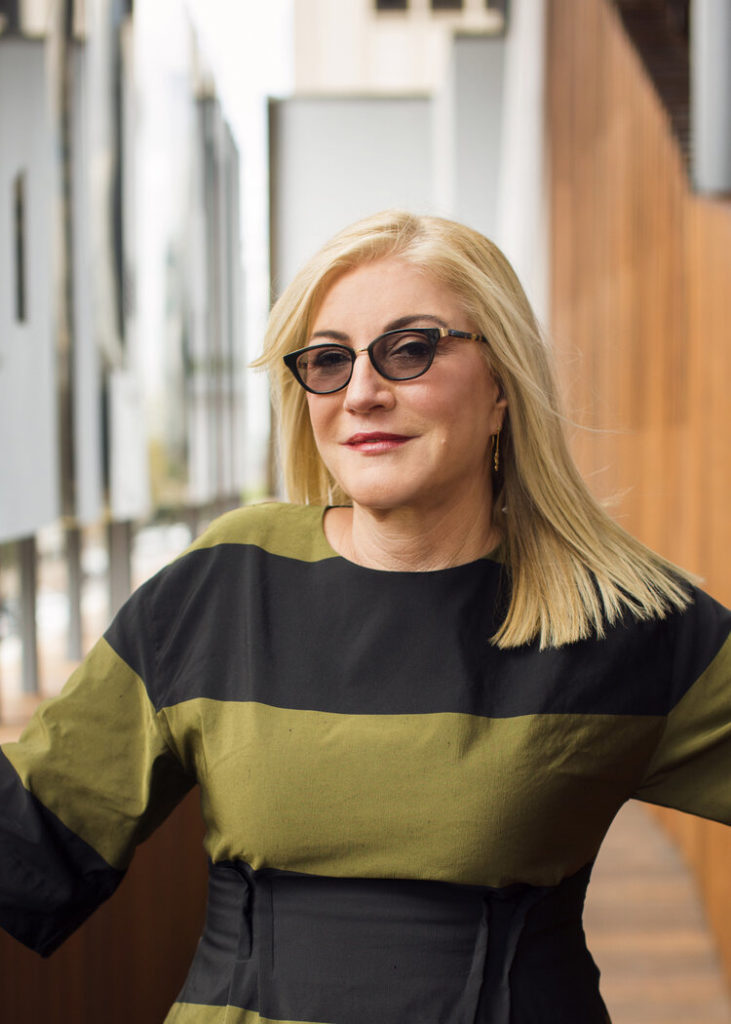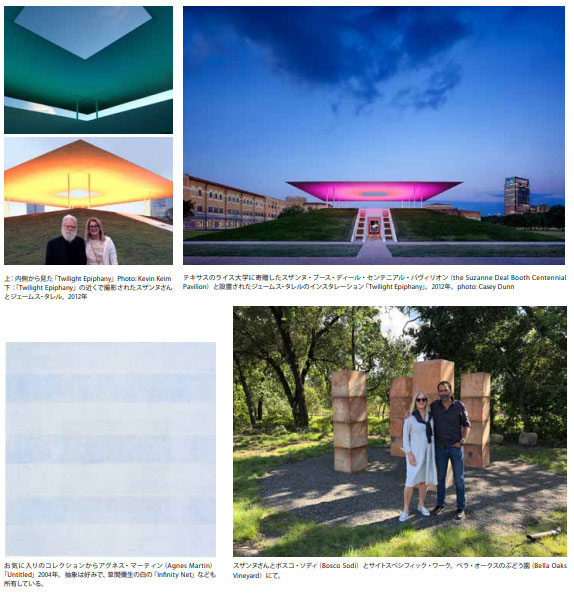
Gift from activist and philanthropist Suzanne Deal Booth brings conservation science to the forefront at UChicago
(Chicago, IL, August 5, 2019) – The University of Chicago’s Department of Art History has received a $1 million gift from activist for cultural heritage protection, philanthropist, and Napa Valley vintner Suzanne Deal Booth for the funding of art conservation courses and internships. The endowment builds upon the efforts of a five-year conservation teaching collaboration implemented by the Department in the spring of 2018.
The generous donation from Deal Booth assures the perpetuity of the piloted initiative’s courses and opportunities for students, funding art conservation and conservation science course offerings on campus as well as an annual undergraduate internship in the field. The endowment marks UChicago as one of the few national institutions to offer regular art conservation and conservation science courses at the college level within a liberal arts institution.
“What truly sets UChicago’s approach apart from specialized conservation programs elsewhere is how it is embedded in a liberal arts education and graduate studies in art history and the humanities,” said Professor Christine Mehring, Chair of the Department of Art History. “Over years of object-driven teaching, I have seen how the material and visual presence of art and architecture fosters not only heightened attention but empowers students from different backgrounds and disciplines: everyone looks at the same thing, together. There is so much untapped potential for students on our campus to investigate relations between the science and the meanings of artistic materials.”
In partnership with the Art Institute of Chicago—and with support from Deal Booth, UChicago’s Pritzker School for Molecular Engineering (PME), Division of the Humanities, and College—the Department of Art History in 2018 created a five-year position to teach two classes each year in conservation and conservation science respectively: the Suzanne Deal Booth Conservation Seminars. Open to both undergraduates and graduate students, the Conservation Seminars draw on ongoing research and treatments of objects in the Art Institute, and in UChicago’s Smart Museum, Oriental Institute, Special Collections, and Public Art Collection. The piloted program also supports a mentored, annual eight-week summer undergraduate internship focused on the scientific investigation of art in the Department of Conservation and Science at the Art Institute.
Established earlier this year, PME is a transformational academic unit and interdisciplinary research institute exploring the intersection of science and engineering. PME builds on the success of efforts by UChicago and Argonne National Laboratory, which partnered in 2011 to establish the Institute for Molecular Engineering. By converging multiple disciplines, PME is well-equipped to contribute to the collaborative nature of the Department’s teaching program. The partnership has already allowed seminar students to make use of the School’s cutting-edge materials science facilities. “The chemical and materials science expertise in the Pritzker School for Molecular Engineering is another piece of the repertoire that UChicago brings to art conservation and art scholarship, guided by colleagues with skills in the subject matter of the art itself and its history,” said Matthew Tirrell, Pritzker Director at the PME.
Maria Kokkori, Associate Conservation Scientist for Scholarly Initiatives at the Art Institute of Chicago, taught the inaugural class of the Suzanne Deal Booth Conservation Seminars, titled “The Material Science of Art.” Kokkori holds an MSc degree from the University of Cambridge, a diploma in conservation of easel paintings, and received her PhD from the Courtauld Institute of Art in London; she then completed a postdoctoral fellowship at the Courtauld Institute. During 2009-2011 she was a postdoctoral research fellow of the Malevich Society in New York. As part of her teaching appointment, Kokkori is also available to advise related BA and/or MA theses in molecular engineering, chemistry, art history, or other related fields.
Deal Booth’s $1 million gift assures the longevity of the Conservation Seminars and internships beyond the piloted initiative’s five-year program. At the student level, funding will enable the Department of Art History to further engage undergraduates in the sciences and recruit doctoral students with experience in investigating material implications in art history. The courses—highly popular amongst a wide pool of majors in the visual arts, chemistry, and geophysical sciences—have raised awareness about the preservation of art and architecture, introduced undergraduates to new fields and career paths, and made students competitive for opportunities in the conservation field. Recent UChicago college graduate Ellen Purdy, a former student of Kokkori’s and the 2019 Suzanne Deal Booth intern at the Art Institute, was named one of thirty-four U.S. recipients of the prestigious 2019 Gates Cambridge Scholarship and will pursue a master of chemistry with a focus in conservation science at the University of Cambridge. Purdy noted that it was her participation in the Suzanne Deal Booth Conservation Seminars, where she analyzed a Kandinsky painting at the Art Institute, that solidified her interests in art conservation.
With the convergence of three recent initiatives—the five-year conservation of Wolf Vostell’s public sculpture Concrete Traffic led by Mehring, a 2016 Rhoades Seminar (an annual course taught at UChicago by an Art Institute curator or conservator) on the materialities of modern art, and the Chicago Objects Study Initiative (COSI) funded by the Andrew W. Mellon Foundation since 2014—interdisciplinary instruction on conservation and conservation science is coming to the forefront at UChicago.
“In addition to providing extraordinary pedagogical opportunities for a liberal arts education, the fields of conservation and conservation science open up exciting areas of student and public engagement with campus collections and Chicago’s urban environment,” said Mehring. “We are deeply grateful that Suzanne’s generosity allows us to open up these experiences to students not only in art history but in chemistry, physics, molecular engineering, and so many other related disciplines.”
“Cultural heritage conservation is more than a static conservation of the past,” Suzanne Deal Booth explained. “It is a dynamic means of informing the future. It gives me great joy and personal satisfaction that these classes are structured to embrace science, art, history, and philosophy with the intention of broadening the students’ knowledge and love for this exciting, interdisciplinary field.”
Banner image: Caroline Longo, student in Suzanne Deal Booth Seminar “The Material Science of Art,” prepares to use x-radiography to examine The Penitent St. Jerome at the Smart Museum of Art.
About the Department of Art History at the University of Chicago
For more than a century, art historians at the University of Chicago have made transformative interventions in the discipline. Today, the Department of Art History distinguishes itself with a combination of global scope, object-driven research, and committed interdisciplinarity. Faculty and students pursue research spanning five continents, as historical strengths in Asian, European, and North American art have expanded to include Latin American, African, and Islamic art, as well as the relations between these and other geographical areas traditionally treated in isolation. The Department participates in object-, material-, and site-based research that is often large-scale and collaborative, object-driven training in the Chicago Objects Study Initiative and Rhoades Program, and annual traveling seminars and conservation classes. Interdisciplinary commitments are manifest in faculty’s co-teaching, cross-appointments, and involvements in other departments, centers, and initiatives across campus, in the multiple workshops faculty and students in art history sponsor and participate in, and in the course work students are encouraged to pursue beyond art history.
UChicago Arts Magazine Article >



